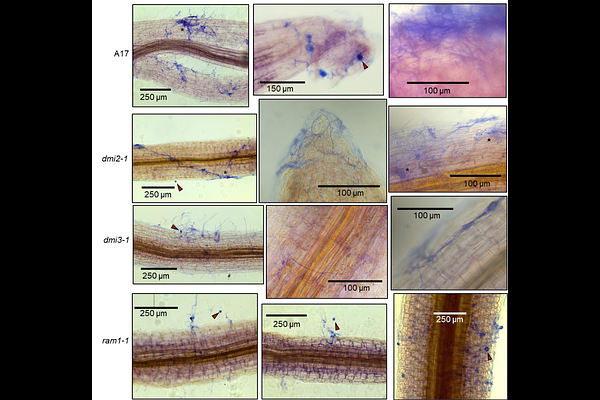Common symbiotic signalling pathway not essential for formation of functional mutualisms with endophytic fungi

Common symbiotic signalling pathway not essential for formation of functional mutualisms with endophytic fungi
Williams, A.; Sinanaj, B.; Rodriguez-Morelos, V.; Prout, J.; Howard, N. O. A.; Durant, E.; Pressel, S.; Field, K.
AbstractMost plants form mutualistic symbioses with soil fungi, including arbuscular mycorrhizal (AM) fungi. These fungi usually transfer soil nutrients to plants and assimilate carbon from host plant photosynthesis. Recently, Mucoromycotina \'fine root endophytes\' (MFRE) were identified as nutritionally mutualistic and widespread fungal symbionts of plants, establishing MFRE as a new class of mycorrhizal fungi. However, the regulatory mechanisms for MFRE symbioses are completely unknown. Other symbionts, like AM fungi, use the \'Common Symbiotic Signalling Pathway\' (CSSP) to establish symbiosis. To explore whether MFRE interactions also involve this pathway, we cultured MFRE with CSSP mutants of Medicago truncatula which show impaired AM symbioses and tracked carbon and nutrient transfers using isotope tracers. Results show no differences in root colonization or nutrient exchange, suggesting MFRE symbioses are regulated by different molecular mechanisms. This finding highlights the unique nature of MFRE symbiosis, broadening our understanding of diverse fungal symbioses and their evolutionary significance.